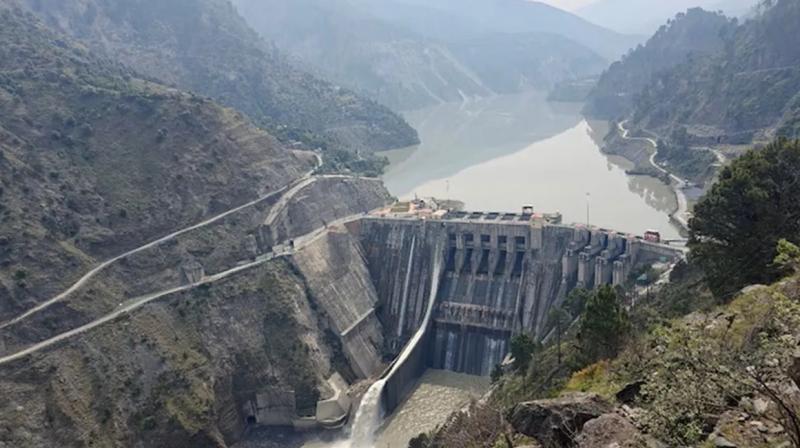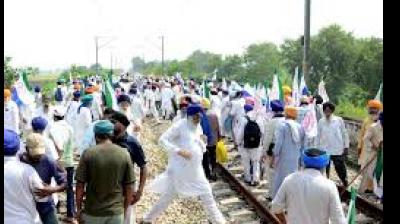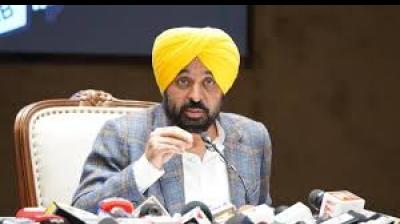
The project received Stage-I forest clearance in July.
Centre Approves Sawalkote Project On Chenab River After 4 Decades Amid Indus Waters Treaty Freeze: The Centre has recommended environmental clearance for the 1,856-MW Sawalkote Hydro Electric Project on the Chenab river in Jammu and Kashmir, a strategically important project being revived following the suspension of the Indus Waters Treaty (IWT) with Pakistan.
Stalled for nearly four decades, the Sawalkote project is one of India's largest hydropower schemes in the Chenab basin and a key part of the government's push to fully utilise its share of western river waters under the 1960 treaty.
Its revival comes months after New Delhi announced the suspension of the treaty following the April 22 Pahalgam terror attack, allowing India to freely develop infrastructure on the Indus, Jhelum and Chenab rivers.
Under the IWT, the three eastern rivers -- Ravi, Beas and Sutlej -- were allocated to India for its exclusive use. The three western rivers -- Indus, Jhelum and Chenab -- were reserved for Pakistan, though India retains limited rights to use their waters for non-consumptive purposes, such as run-of-the-river hydropower generation, navigation and fisheries.
To be built by the National Hydroelectric Power Corporation (NHPC) Limited at an estimated cost of Rs 31,380 crore, the run-of-the-river project will straddle Ramban, Reasi and Udhampur districts of Jammu and Kashmir.
It includes a 192.5-metre-high roller-compacted concrete dam and underground powerhouses designed to generate about 7,534 million units of electricity annually.
Once commissioned, it will be the largest hydropower project in the Union Territory and provide crucial peaking power and grid stability for northern states. The project carries both developmental and strategic weight.
Besides adding to the region's power supply, the project will enhance India's ability to manage and store the Chenab's waters, a right allowed under the IWT but rarely exercised fully due to engineering challenges and diplomatic sensitivities with Pakistan.
The Expert Appraisal Committee (EAC) for river valley and hydroelectric projects of the Union environment ministry, at its meeting on September 26, examined the NHPC's updated proposal covering a total area of 1,401.35 hectares, including 847.17 hectares of forest land.
The project received Stage-I forest clearance in July.
According to the committee's minutes published on October 9, no protected area lies within a 10-kilometre radius of the site and the nearest sanctuary, Kishtwar High Altitude National Park, is about 63 kilometres away. The NHPC's revised environmental-management plan allocates about Rs 594 crore for mitigation and restoration measures, up from Rs 392 crore earlier.The plan includes catchment-area treatment, muck disposal, biodiversity conservation and long-term monitoring of the air, water, soil and aquatic ecosystems.
The project will affect 13 villages and displace about 1,500 families, primarily in the Ramban district.
The NHPC has proposed a detailed rehabilitation-and-resettlement plan, offering housing, livelihood support and skill development to the project-affected families.
Around 1,500 people will be employed during construction, with about 200 technical staff retained during operation.
Public hearings were held in Udhampur, Reasi and Ramban in early 2016, where residents demanded fair compensation, better connectivity, healthcare, education facilities and free electricity.
Concerns were also raised over forest loss and riverine impacts.
The EAC, after reviewing the updated baseline environmental data and responses, found the proposal compliant with regulatory norms and recommended clearance with specific environmental safeguards.
The Sawalkote project was first conceived in the 1980s but faced repeated delays over forest clearances, rehabilitation issues and questions about cumulative impact studies.
The environment ministry's Forest Advisory Committee and the home ministry recently backed its clearance on strategic grounds, noting that new assessment norms introduced in 2013 should not apply retrospectively to older projects. (PTI)
(For more news apart from “Centre Approves Sawalkote Project On Chenab River After 4 Decades Amid Indus Waters Treaty Freeze,” stay tuned to Rozana Spokesman.)













